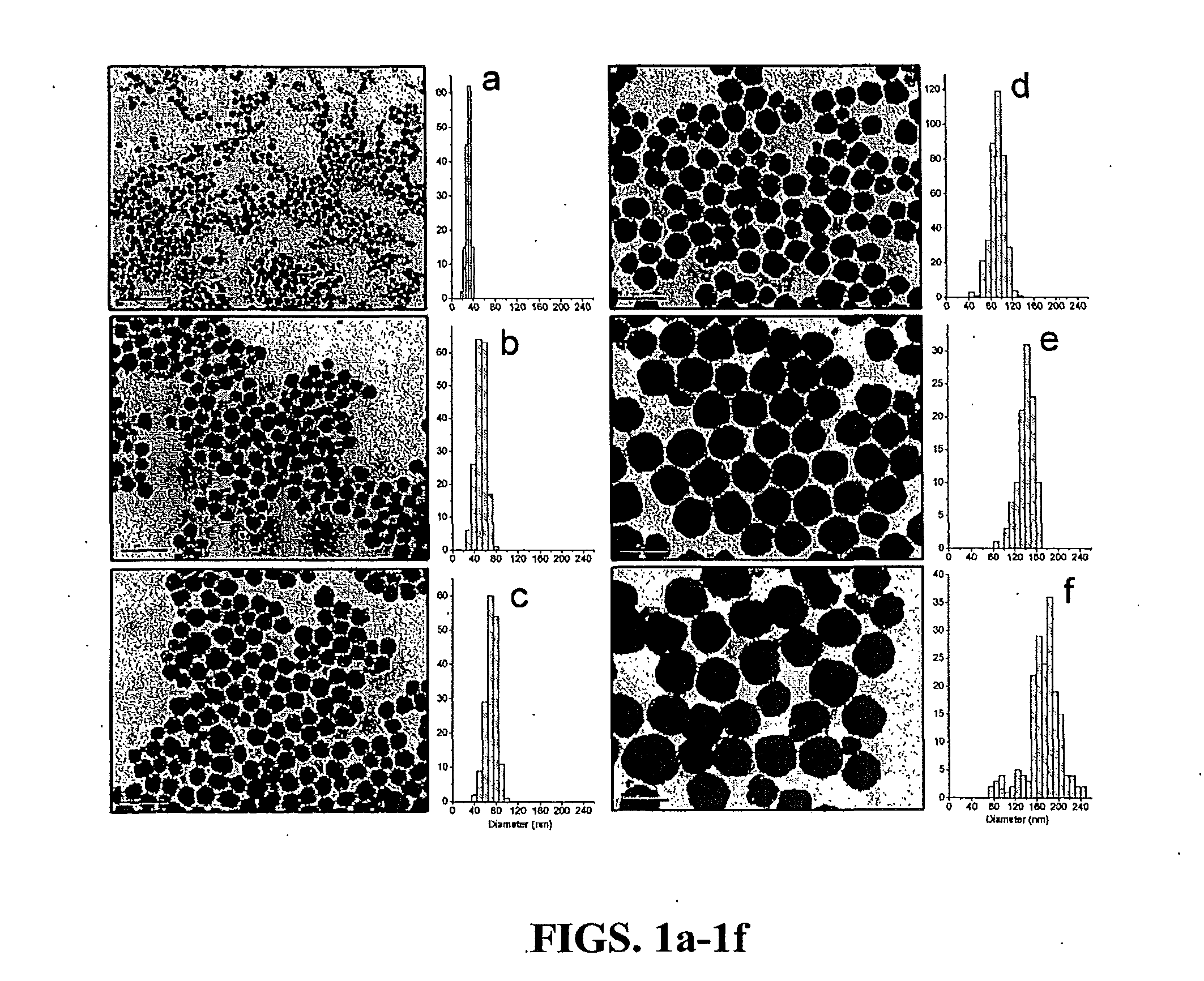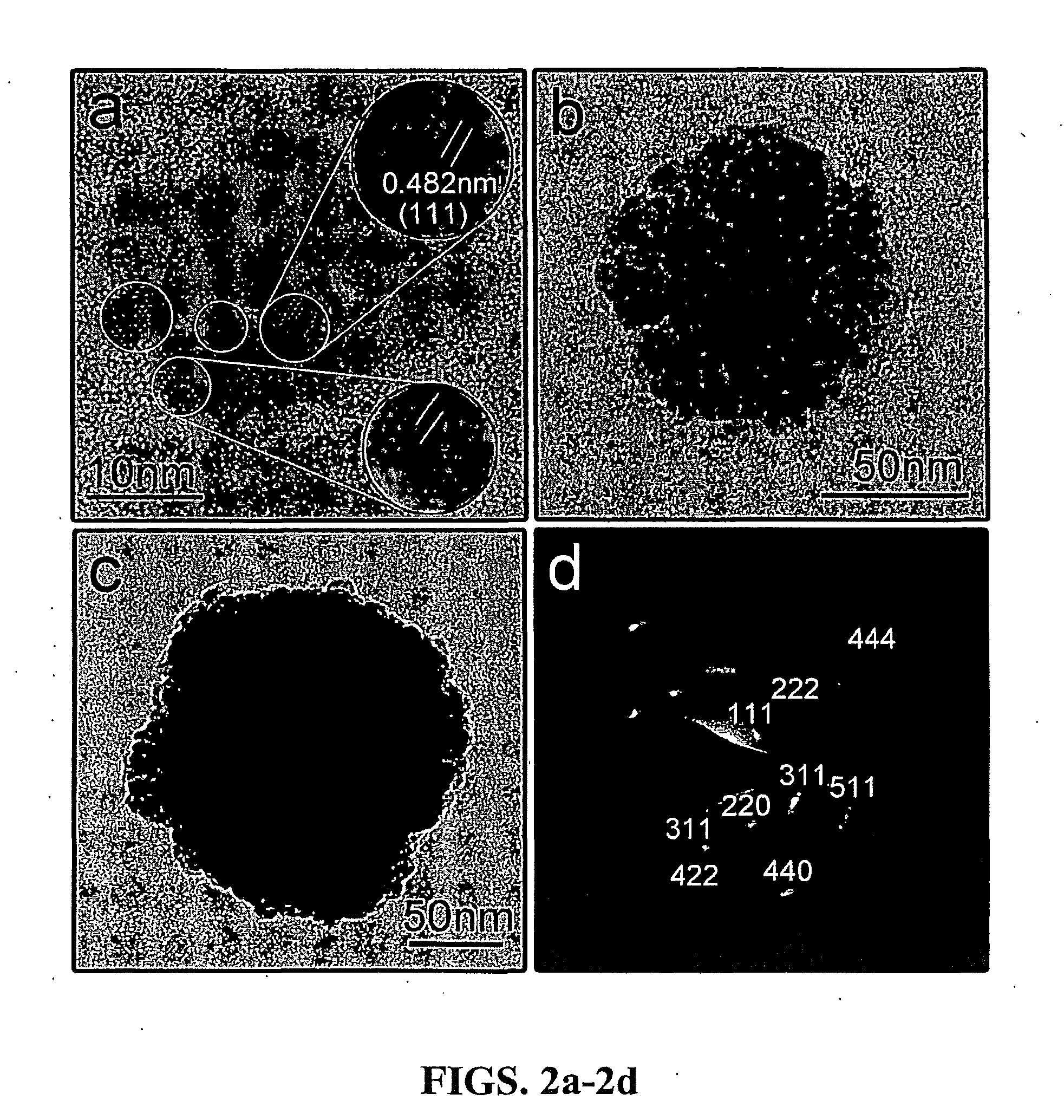Superparamagnetic colloidal nanocrystal structures
a superparamagnetic magnetite and nanocrystal technology, applied in the direction of instruments, ferroso-ferric oxides, iron compounds, etc., can solve the problems of limiting their use in some practical applications, and achieve high magnetization per particle, strong response, and high water dispersibility
- Summary
- Abstract
- Description
- Claims
- Application Information
AI Technical Summary
Benefits of technology
Problems solved by technology
Method used
Image
Examples
Embodiment Construction
[0028]The present invention is directed to superparamagnetic magnetite colloidal nanocrystal clusters (CNC) and methods of their production. Highly water soluble magnetite (Fe3O4) CNCs are synthesized by a high temperature hydrolysis reaction using a precursor, a surfactant, a precipitation agent and a polar solvent. A NaOH / DEG stock solution was prepared by dissolving NaOH (50 mmol) in DEG (20 ml); this solution was heated at 120° C. for one hour under nitrogen, and cooled down and kept at 70° C. In a typical synthesis, a mixture of PAA (4 mmol), FeCl3 (0.4 mmol) and DEG (17 ml) was heated to 220° C. in a nitrogen atmosphere for at least 30 min under vigorous stirring, forming a transparent light-yellow solution. A NaOH / DEG stock solution (1.75 ml) was injected rapidly into the above hot mixture, and the temperature dropped to about 210° C. instantly. The reaction solution slowly turned black after about two minutes and eventually slightly turbid. The resulting mixture' was further...
PUM
| Property | Measurement | Unit |
|---|---|---|
| size | aaaaa | aaaaa |
| size | aaaaa | aaaaa |
| temperature | aaaaa | aaaaa |
Abstract
Description
Claims
Application Information
 Login to View More
Login to View More - R&D
- Intellectual Property
- Life Sciences
- Materials
- Tech Scout
- Unparalleled Data Quality
- Higher Quality Content
- 60% Fewer Hallucinations
Browse by: Latest US Patents, China's latest patents, Technical Efficacy Thesaurus, Application Domain, Technology Topic, Popular Technical Reports.
© 2025 PatSnap. All rights reserved.Legal|Privacy policy|Modern Slavery Act Transparency Statement|Sitemap|About US| Contact US: help@patsnap.com



